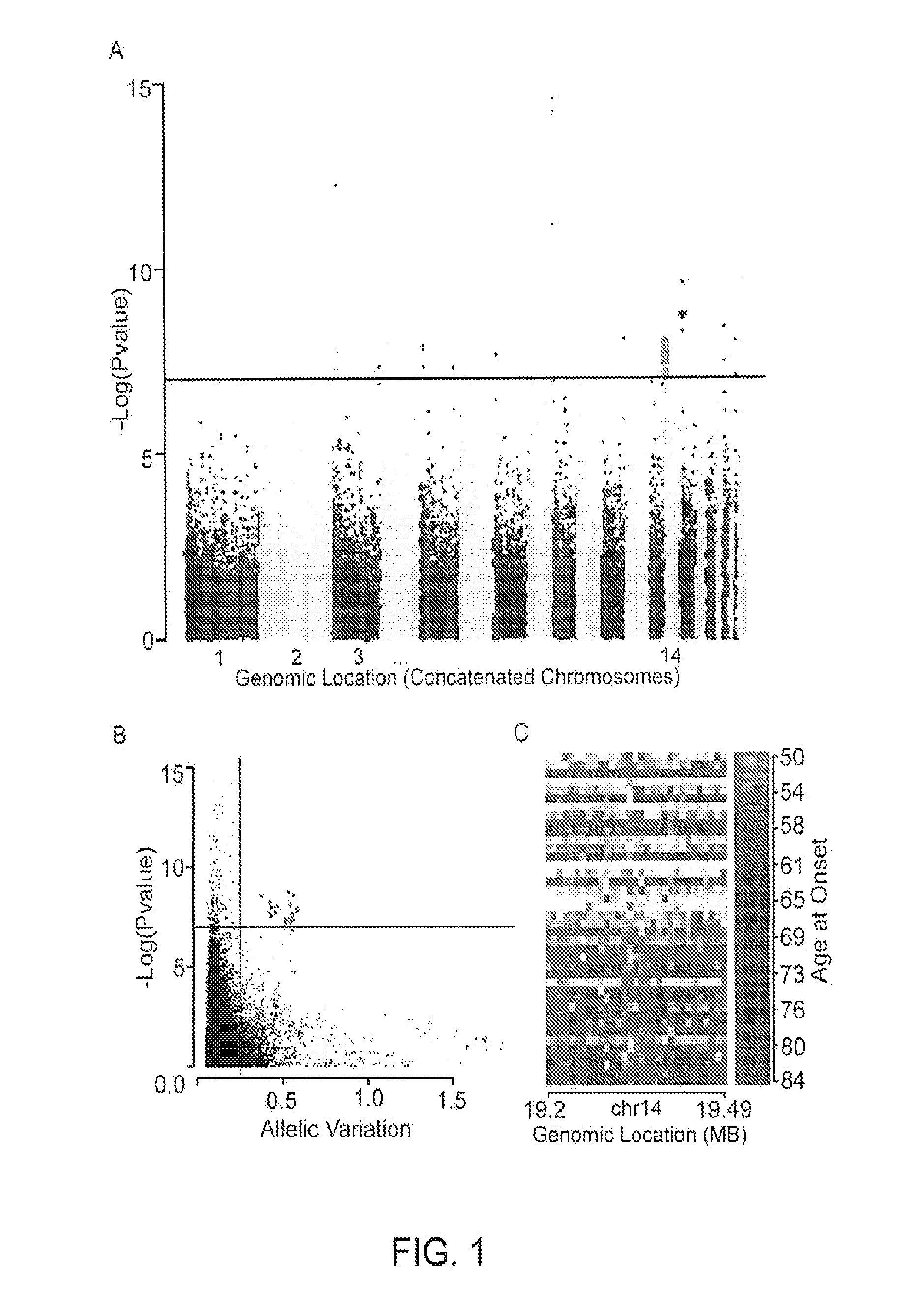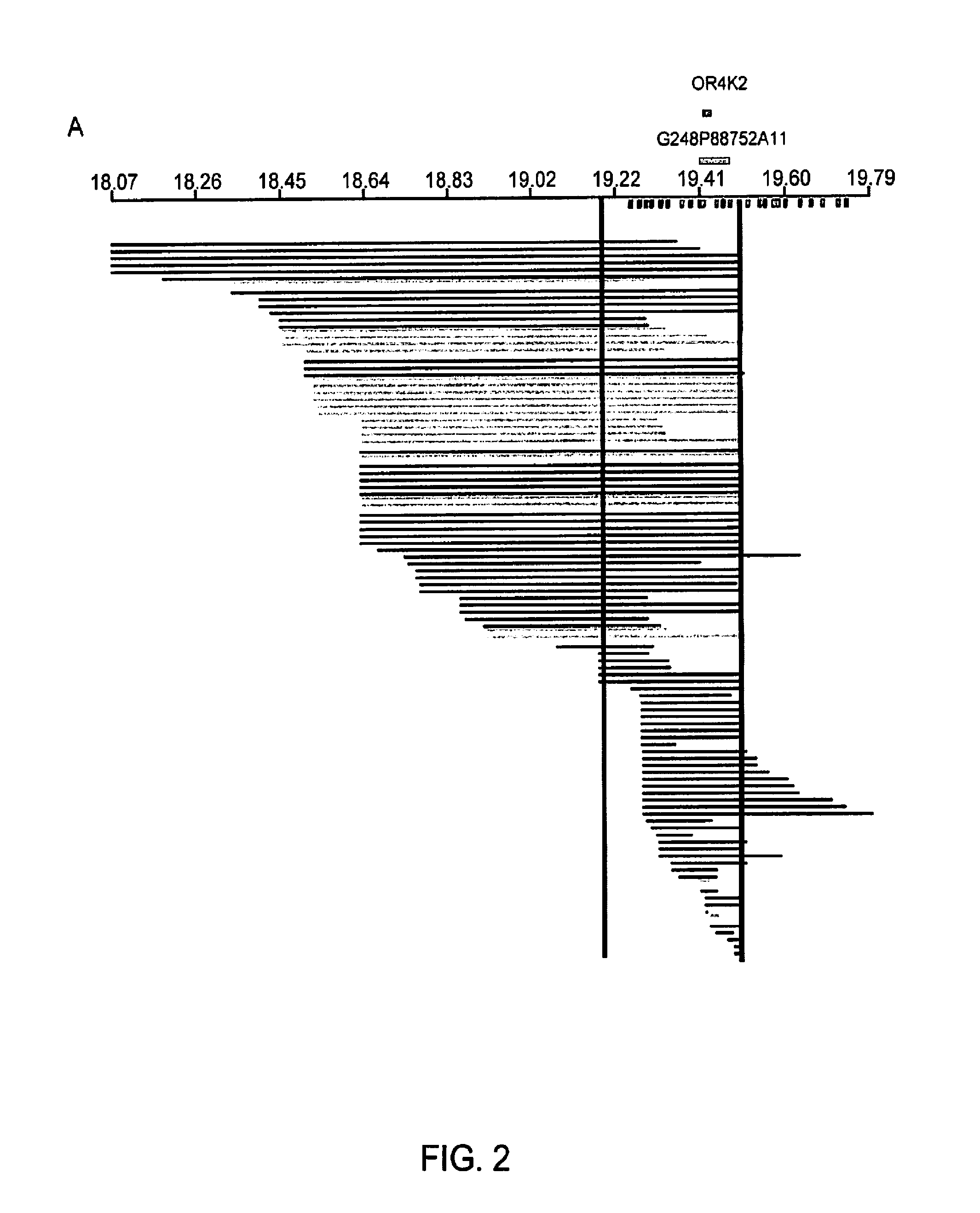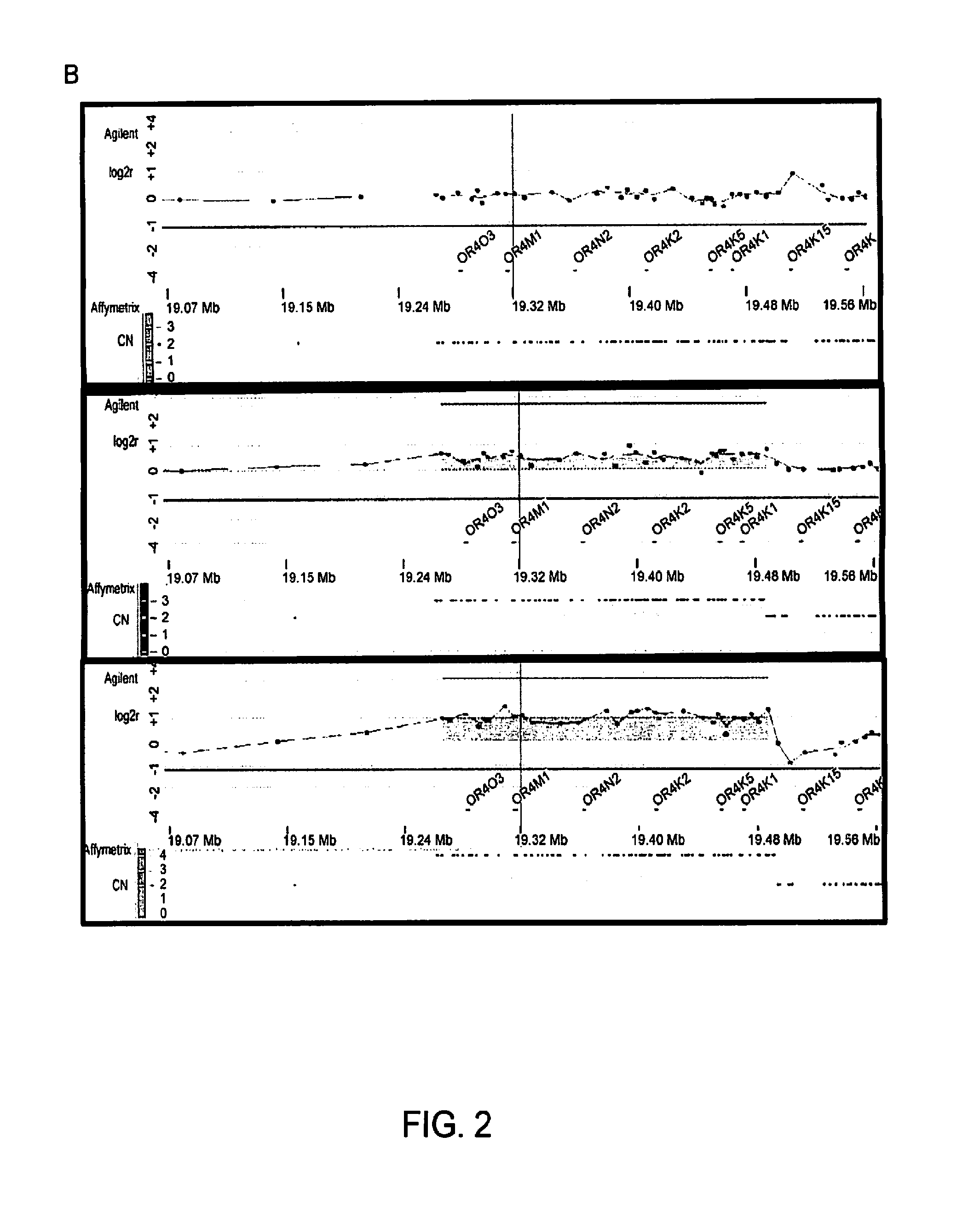Olfactory receptor copy number association with age at onset of alzheimer's disease
a technology of alzheimer's disease and copy number, applied in the field of genetics, medicine, cell biology, molecular biology, can solve problems such as insufficient tagged by
- Summary
- Abstract
- Description
- Claims
- Application Information
AI Technical Summary
Benefits of technology
Problems solved by technology
Method used
Image
Examples
example 1
Olfactory Copy Number Association with Age of Onset of Alzheimer's Disease
[0057]A cases-only genome-wide CNV association study was performed looking for loci affecting AAO of AD. In the discovery cohort data was collected on array comparative genome hybridization and binned probe level array data was the predictor in a hazard function regression with AAO as the outcome. A correction for multiple testing in the genome wide analysis was performed via a simulation study performing 1000 permutations of the patient labels. The replication study was performed on SNP array and inferred CNVs were the predictors in a hazard function regression. The gene dosage and genomic location was confirmed by FISH for the most common allele using HapMap cell lines. A chromosomal segment on 14q11.2 (reference sequence position 19.3-19.5 Mb) was identified where gene dosage is associated with AAO of AD (genome-wide adjusted p2 copy number) was associated with earlier AAO, and loss was associated with late...
example 2
Exemplary Subjects and Methods
Subject Cohorts
[0058]The discovery and replication cohorts included 40 and 507 subjects with Probable AD by NINCDS-ADRDA criteria (McKhann et al., 1994), respectively. The discovery cohort samples and associated phenotypic data were collected at the Alzheimer Disease and Memory Disorders Center of Baylor College of Medicine (Doody et al., 2005). The methodology of the Texas Alzheimer Research Consortium project has been described in detail elsewhere (Waring et al., 2008). These institutions participated in the collection of samples and phenotypic data from the replication cohort following a standardized IRB-approved study protocol. The discovery cohort was ascertained as the first 40 consecutive APOE non-carriers with the permission of one APOE 4 allele if the subject had early AAO, as studies consistently reported that one APOE4 allele has minor effect on AAO compared to homozygosity for APOE4. This design removes the variance of AAO originating from A...
example 3
Olfactory Receptor Cluster Copy Number Association with AAO and Ad in the Discovery Cohort
[0062]A cluster of hazard regression results was identified displaying significant association with AAO on chromosome 14 in the pericentromeric region of the q arm. In this region there were 22 results with a −log_e p value greater than 7 and with the same direction of effect between log—2-ratio and AAO (FIG. 1A). The region on chromosome 14 also appears to have high variability in CN state in our patient cohort so that the association is not driven by a single outlying individual or few individuals. The significant results identified by regression are among the highest 1% of allelic variability across all genomic regions (FIG. 1B). The array data heatmap (FIG. 1C) visually demonstrates the copy number state in conjunction with the AAO data (FIG. 1C). The high copy number state (defined by a mean log—2-ratio for this region greater than zero) is correlated with younger AAO with a median of 67 y...
PUM
| Property | Measurement | Unit |
|---|---|---|
| total volume | aaaaa | aaaaa |
| total volume | aaaaa | aaaaa |
| total volume | aaaaa | aaaaa |
Abstract
Description
Claims
Application Information
 Login to View More
Login to View More - R&D
- Intellectual Property
- Life Sciences
- Materials
- Tech Scout
- Unparalleled Data Quality
- Higher Quality Content
- 60% Fewer Hallucinations
Browse by: Latest US Patents, China's latest patents, Technical Efficacy Thesaurus, Application Domain, Technology Topic, Popular Technical Reports.
© 2025 PatSnap. All rights reserved.Legal|Privacy policy|Modern Slavery Act Transparency Statement|Sitemap|About US| Contact US: help@patsnap.com



